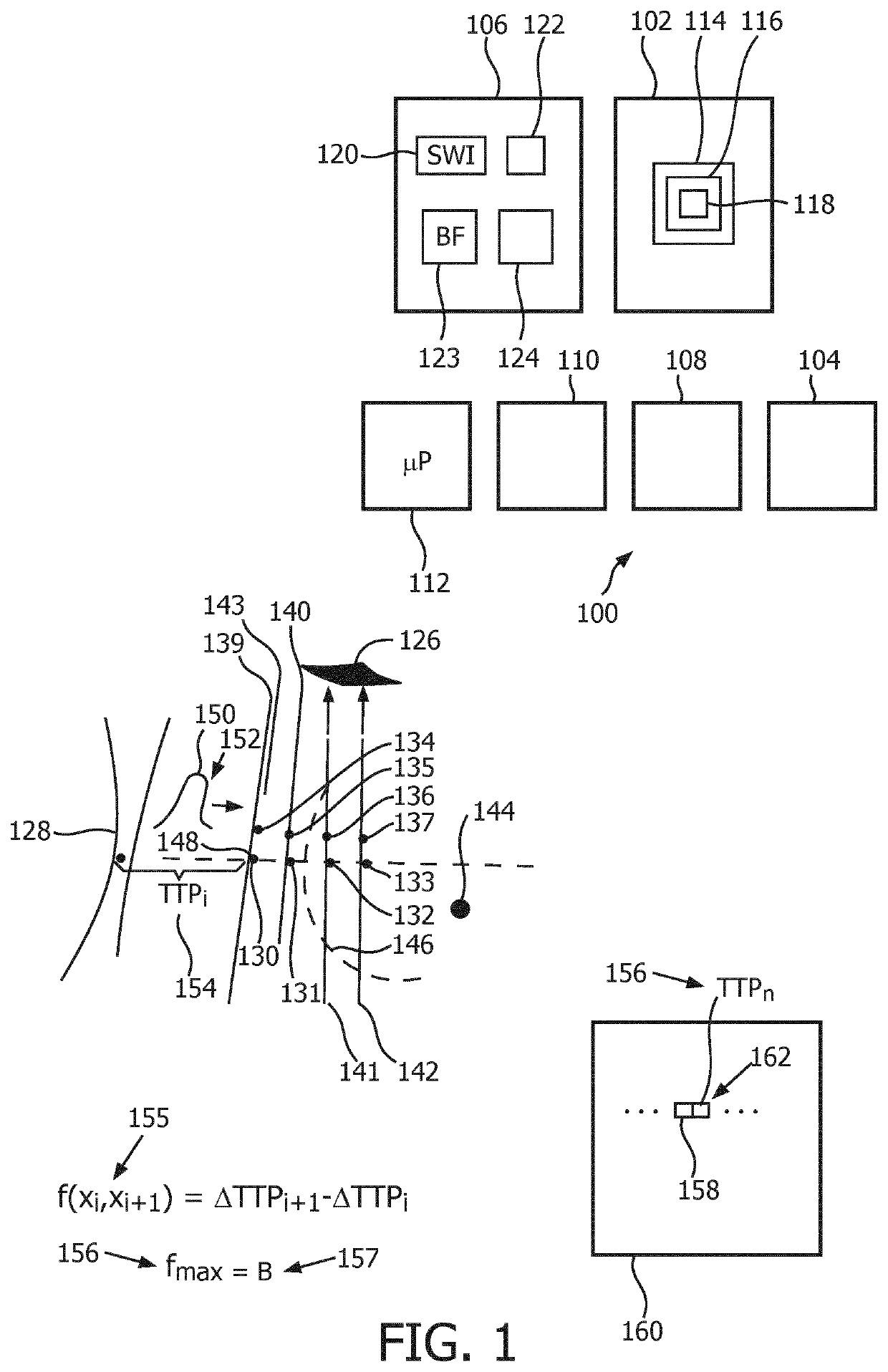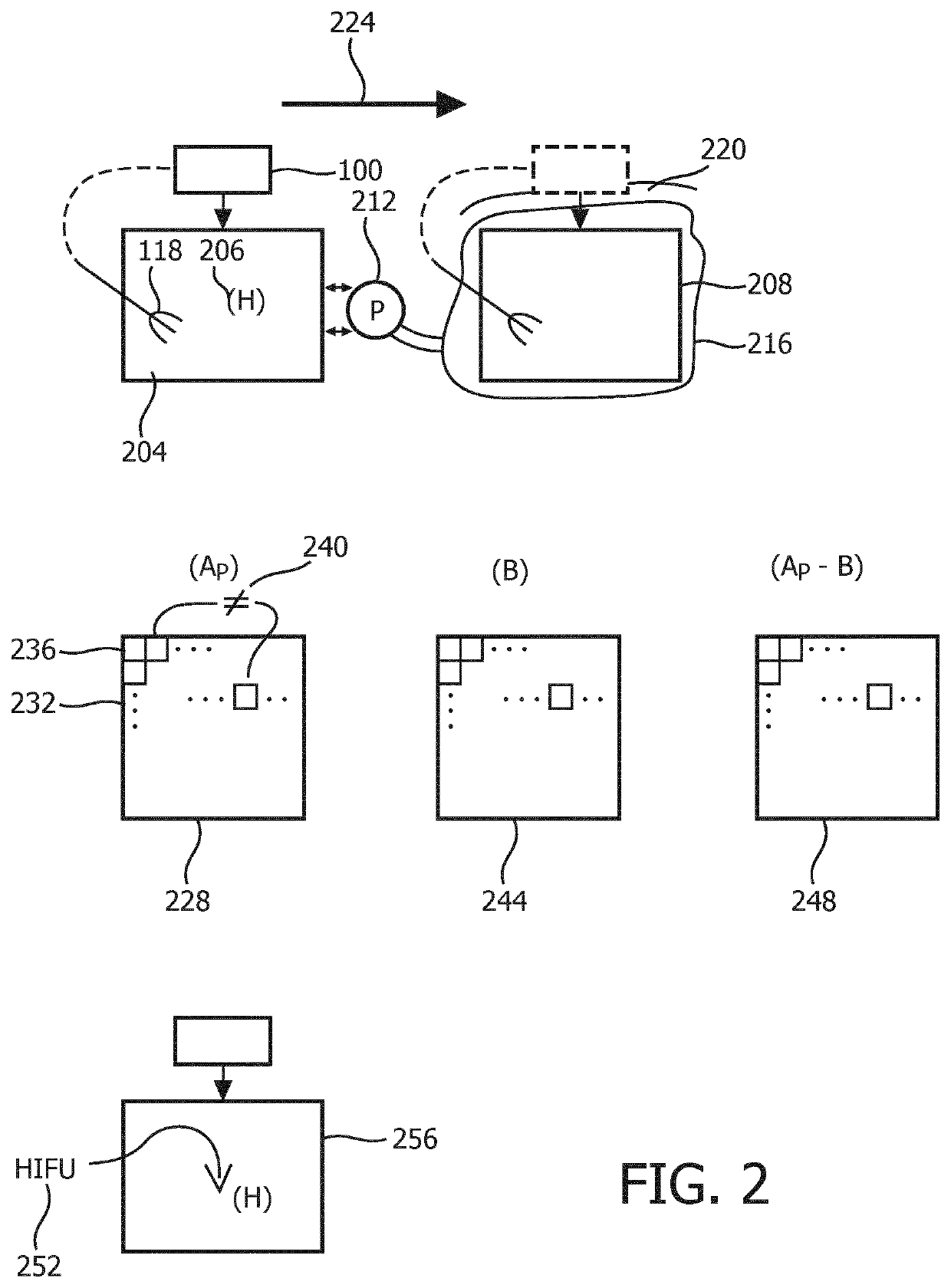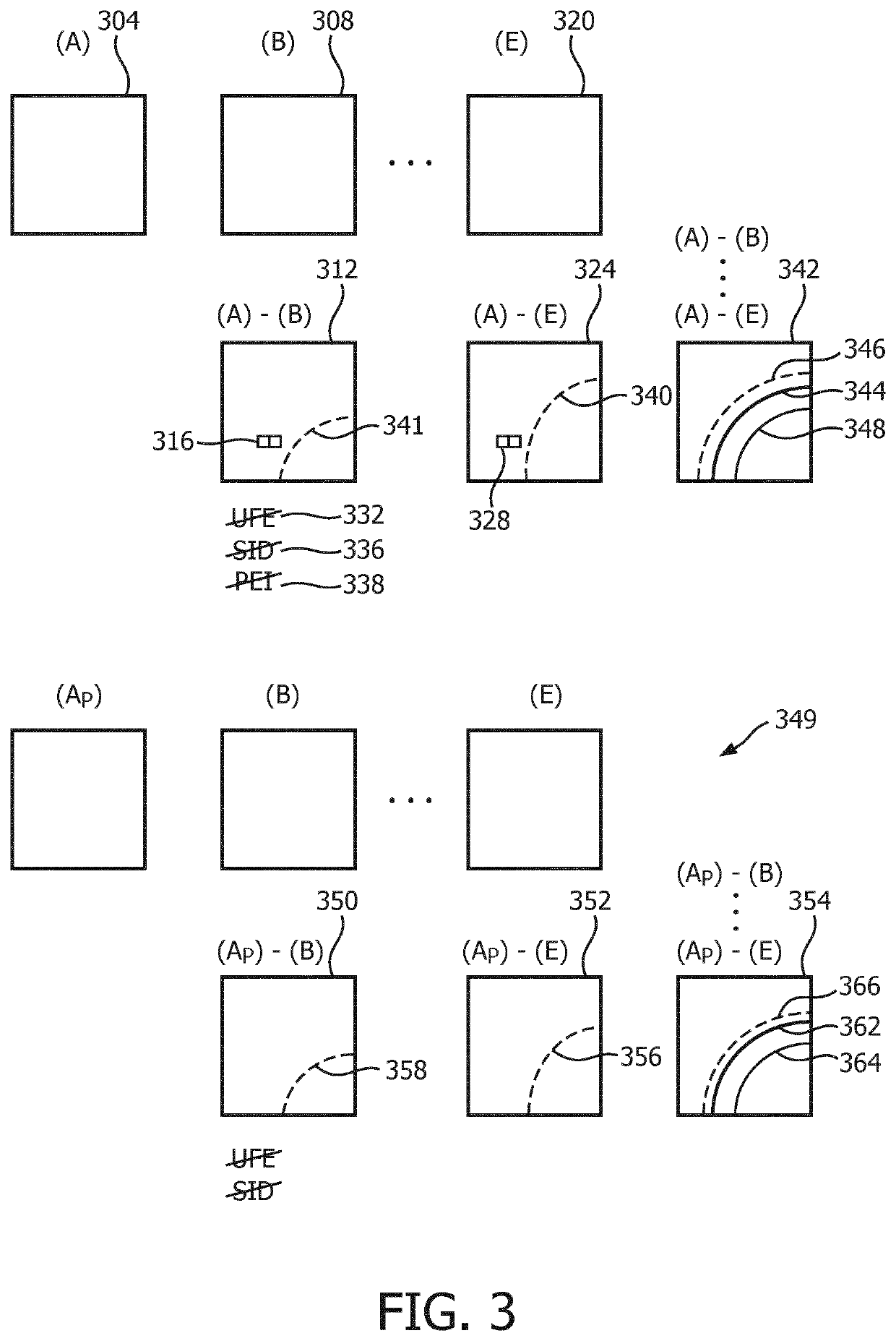Calibration of ultrasonic elasticity-based lesion-border mapping
a technology of elasticity and calibration, applied in the field of mapping calibration and/or lesion border detection, can solve the problems of low signal-to-noise ratio (s/n), low spatial resolution of low frequency imaging, and insufficient sensitive ultrasound-based elastography measurements to accurately detect the boundary portion of ablated tissue in the vicinity of a stiff medical instrument, etc., to achieve the effect of increasing thermal exposure, and reducing the risk of ablation
- Summary
- Abstract
- Description
- Claims
- Application Information
AI Technical Summary
Benefits of technology
Problems solved by technology
Method used
Image
Examples
Embodiment Construction
[0026]FIG. 1 depicts, by way of illustrative and non-limitative example, a real-time, thermal ablation monitoring elastography apparatus 100. The apparatus 100 includes an ablation device 102, an energy source 104, an imaging device 106, a display 108, user controls 110, and a microprocessor 112 or other processor such as a shear wave elastography computing unit. The microprocessor function is realizable in one or more integrated circuits. However, it could be implemented with any combination of software, firmware, and hardware.
[0027]The ablation device 102 includes, as a type of ablation equipment, an ablation needle 114. The latter includes radiofrequency (RF) electrode 116 which includes one or more tines 118 extendable into body tissue to apply heat for ablation. The energy source 104, such as the mains electrical current, provides energy for the heating. The ablation needle 114 may instead be one used for cryotherapy or microwave ablation, with an alternative corresponding cons...
PUM
 Login to View More
Login to View More Abstract
Description
Claims
Application Information
 Login to View More
Login to View More - R&D
- Intellectual Property
- Life Sciences
- Materials
- Tech Scout
- Unparalleled Data Quality
- Higher Quality Content
- 60% Fewer Hallucinations
Browse by: Latest US Patents, China's latest patents, Technical Efficacy Thesaurus, Application Domain, Technology Topic, Popular Technical Reports.
© 2025 PatSnap. All rights reserved.Legal|Privacy policy|Modern Slavery Act Transparency Statement|Sitemap|About US| Contact US: help@patsnap.com



